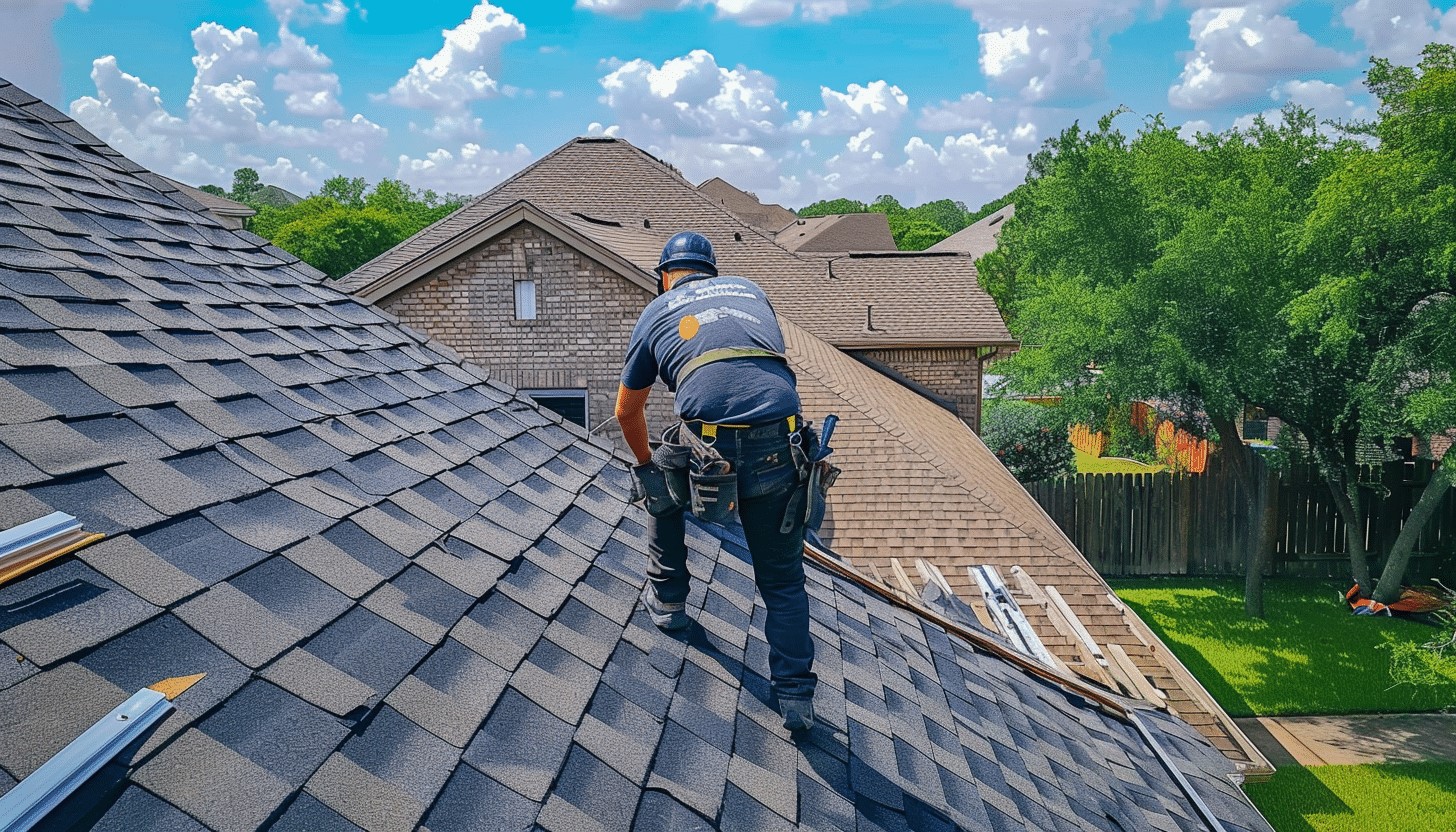
Storms are formidable forces of nature that can wreak havoc on your roof. Detecting storm damage early is critical to prevent costly repairs and maintain your home’s safety. This ultimate guide will walk you through the process of a comprehensive storm damage roof inspection, revealing key signs to watch for and preventative measures to implement. Discover the benefits of regular
today.
Why Every Home Needs a Storm Damage Roof Inspection
Roofs are your home’s first defense against harsh weather. A storm damage roof inspection is essential to identify and repair any damage promptly. By understanding the impact of storms on your roof, you can take proactive steps to protect your investment.
Key Indicators of Storm Damage
Spotting Missing or Damaged Shingles
Missing or damaged shingles are often the most visible signs of storm damage. High winds can easily lift or tear shingles, leaving your roof vulnerable. Ensure your roof’s longevity with our
tips.
- Look for shingles scattered around your yard.
- Check for visible gaps on your roof.
- Inspect shingles for cracks, curls, or tears.
A thorough storm damage roof inspection can help you identify these issues early.
Detecting Dents and Punctures
Hailstorms can leave behind dents and punctures, especially on metal roofs or asphalt shingles.
- Check metal flashings or vents for dents.
- Look for punctures in shingles or other roofing materials.
Incorporating a storm damage roof inspection into your routine ensures you catch these problems before they escalate.
Identifying Granule Loss
Granules on asphalt shingles protect them from UV rays. Storms can dislodge these granules, reducing the lifespan of your roof.
- Look for granules in gutters or downspouts.
- Inspect shingles for bald spots.
A detailed storm damage roof inspection will highlight these subtle yet significant signs of wear.
Additional Signs to Watch For
Leaks and Water Damage
Water infiltration through damaged roofs can cause extensive interior damage.
- Notice water stains on ceilings or walls.
- Detect damp or musty odors in the attic.
- Look for visible mold growth.
Regular storm damage roof inspections can help you spot leaks early, preventing further damage. Learn more about the importance of
for your home.
Sagging Roof Deck
A sagging roof deck indicates severe structural issues that need immediate attention.
- Observe uneven roof lines.
- Identify areas of the roof that appear to be sinking.
Prompt storm damage roof inspection can avert potential disasters from structural damage.
Steps to Take After Identifying Storm Damage
Conducting a Safe Preliminary Inspection
- Use binoculars or a zoom camera to inspect your roof from the ground safely.
- Look for all the signs mentioned above during your storm damage roof inspection.
Documenting the Damage
- Take clear photos and detailed notes of all visible damage.
- This documentation is crucial for insurance claims.
Engaging a Professional Roofing Contractor
- Hire a professional to perform a thorough storm damage roof inspection.
- Professionals can spot hidden issues that might not be visible to the untrained eye.
Filing an Insurance Claim
- Submit your documentation and repair estimates to your insurance company.
- Start the claim process for storm damage repairs promptly.
Preventative Measures for Future Storms
Regular Roof Maintenance
Routine maintenance can help you catch potential problems before they worsen.
- Clean gutters and downspouts regularly.
- Trim overhanging branches.
- Inspect and repair loose or damaged shingles.
Incorporating storm damage roof inspection into your regular maintenance schedule is key.
Upgrading to Storm-Resistant Materials
Consider installing more durable materials designed to withstand severe weather.
- Choose impact-resistant shingles.
- Opt for metal roofing.
- Consider rubber roofing systems.
These upgrades can significantly enhance the resilience of your roof against storms. Get professional help with our preventative measures services.
Frequently Asked Questions
How Often Should I Conduct a Storm Damage Roof Inspection?
It’s recommended to inspect your roof at least twice a year, preferably in spring and fall, and after any significant storm.
Can I Perform Roof Repairs Myself?
While minor repairs might seem manageable, it’s best to hire a professional to ensure the work is done safely and correctly.
How Long Do I Have to File an Insurance Claim for Storm Damage?
This varies by insurance policy. Check with your insurance provider for specific timelines and requirements.
What Should I Do If I Can’t See the Damage from the Ground?
If you’re unable to assess the damage yourself, contact a professional roofing contractor for a detailed storm damage roof inspection.
Are There Specific Signs of Storm Damage on Flat Roofs?
Yes, look for pooling water, bubbles in the roofing material, and damage to the roof membrane or flashing.
How Can I Prevent Future Storm Damage to My Roof?
Regular maintenance, timely repairs, and using storm-resistant materials can significantly reduce the risk of storm damage.
Conclusion
A comprehensive storm damage roof inspection is crucial for maintaining your roof’s integrity and protecting your home. By recognizing key signs of damage and taking preventative measures, you can ensure your roof remains robust against future storms. Don’t hesitate to contact a professional roofing contractor for expert advice and repair services.
For professional roof inspection and repair services, contact Sugar Land Roofing at (832) 536-8856. Our experienced team is ready to help you maintain the integrity and safety of your home.